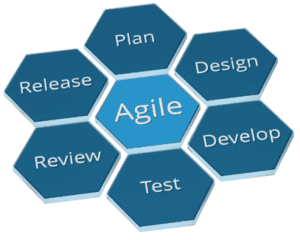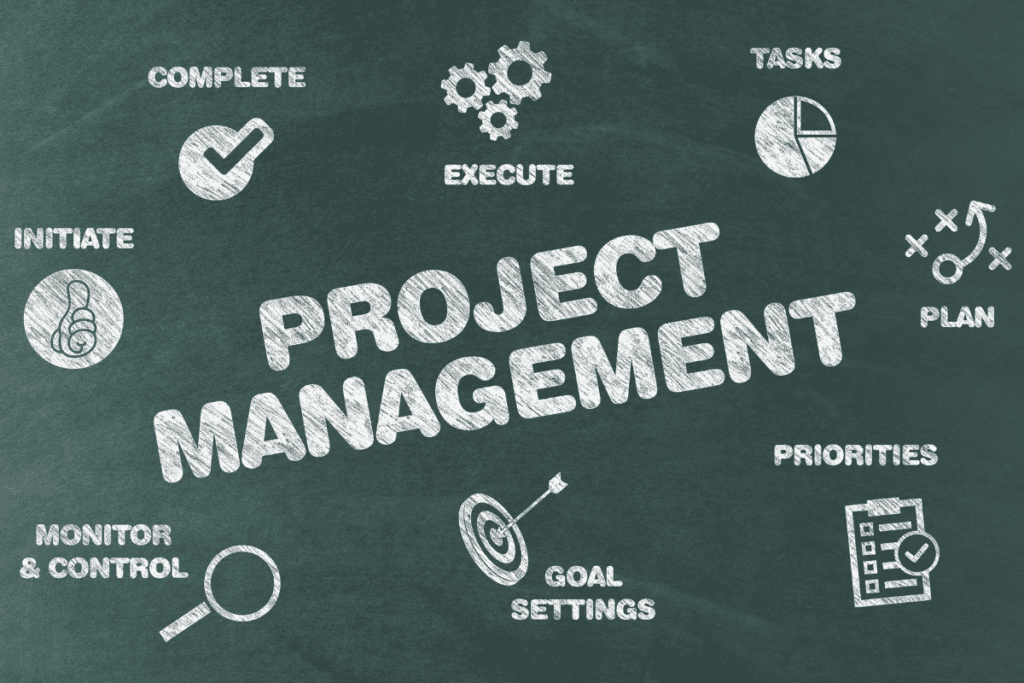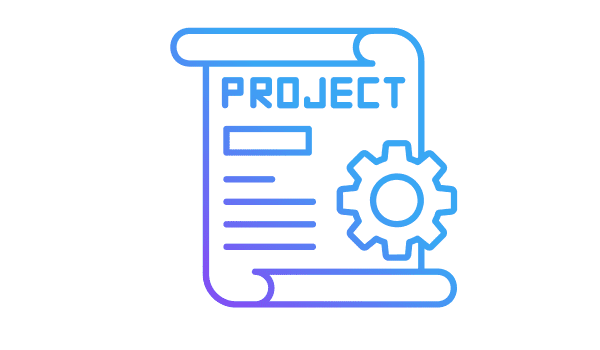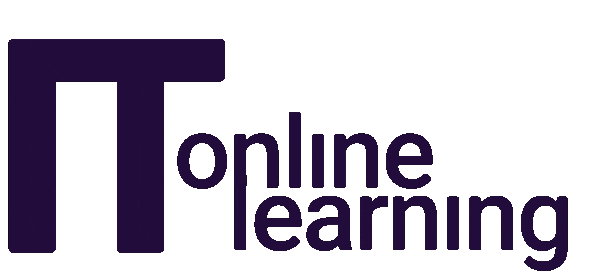A Project Management Office, commonly called a PMO, is a department within an organisation that oversees and manages projects.
The primary role of a PMO is to standardise project management practices, ensure project alignment with organisational goals, and provide support and guidance to project teams.
A PMO acts as a bridge between project managers and top-level management, facilitating communication, resource allocation, and decision-making.
It is a hub for project-related information, best practices, and lessons learned, promoting consistency and efficiency across projects.
Understanding the Agile Methodology

Imagine a world where projects are managed precisely, teams work harmoniously, and customer satisfaction is paramount.
This is the world of Agile, a methodology that revolutionises project management by embracing change as an opportunity rather than a hindrance.
At its core, Agile is a mindset, a way of thinking that values collaboration, iterative development, and constant feedback.
It encourages teams to break down complex projects into smaller, more manageable chunks, allowing flexibility and adaptability.
Say you are building a website for a client. With traditional project management, you’d spend months planning every detail, only to discover that the client’s needs have changed when you’re ready to launch. Agile, on the other hand, takes a different approach.
The Agile methodology works on the principle of continuous improvement. It fosters a culture of collaboration and open communication, breaking down silos and encouraging cross-functional teams to work together towards a common goal.
By embracing Agile, companies are able to streamline communication, eliminate bottlenecks, and make informed decisions based on real-time feedback.
The benefits extend beyond improved communication and collaboration.
In a business environment that demands innovation and flexibility, time is of the essence.
This approach allows teams to deliver results quickly and efficiently, reducing time to market and gaining a competitive edge.
It enables companies to respond swiftly to changing market demands, ensuring they stay ahead of the curve.
Agile methodology empowers stakeholders by keeping them involved throughout the project lifecycle. Instead of waiting until the end to showcase the final product, it encourages regular check-ins and demonstrations.
Important: Involving stakeholders from the beginning builds trust, ensuring the end product meets their expectations.
The methodology is a game-changer in modern project management because it enables companies to navigate the complexities of today’s business landscape, embracing change as an opportunity rather than a setback.
By fostering, among others:
- Collaboration
- Adaptability
- Continuous improvement
Agile empowers teams to deliver outstanding results, exceed expectations, and ultimately drive business success.
Explored: The Benefits of Integrating Agile Principles in PMOs
By integrating Agile principles, project management offices build the capabilities to navigate projects efficiently, deliver outstanding results, and exceed expectations.
The benefits include:
Streamlined Communication: Promotes frequent and transparent communication, reducing misunderstandings and fostering collaboration.
Flexibility and Adaptability: Enables PMOs to respond quickly to changes, enhancing adaptability and successful outcomes.
Continuous Improvement: Prioritises continuous improvement in efficiency, quality, and customer satisfaction.
Increased Productivity: Optimises workflow, increasing productivity and timely project completion.
Stakeholder Engagement: Emphasises stakeholder collaboration, promoting transparency and greater customer satisfaction.
Risk Mitigation: Facilitates early identification and mitigation of risks, ensuring project success.
What are the Twelve Agile Principles and Values?
Twelve principles underpin the Agile methodology. These serve as the foundation for its methodology. Each principle encapsulates a key concept or value that Agile teams should embrace.
- Customer satisfaction through early and continuous delivery: Agile prioritises delivering value to the customer as early as possible, enabling feedback and adaptation that’s quick and timely.
- Welcome changing requirements, even late in development: This methodology recognises the changing nature of requirements and embraces flexibility to accommodate evolving needs and priorities.
- Deliver working software frequently, with a preference for shorter timescales: Agile aims to deliver working software in short iterations, enabling faster feedback and validation.

- Collaboration between business stakeholders and developers: emphasis on close collaboration and active involvement of stakeholders throughout the development process to ensure shared understanding and alignment.
- Build projects around motivated individuals: Motivated people drive successful projects; Agile encourages environments that foster motivation and autonomy.
- Face-to-face communication as the most effective method: values direct and frequent face-to-face communication as it promotes efficient information exchange, enhances understanding, and builds stronger relationships.

- Working software is the primary measure of progress: focuses on tangible outcomes, with working software being the ultimate measure of progress rather than relying solely on documentation or plans.
- Sustainable development, maintaining a constant pace: promotes sustainable development by ensuring a consistent and manageable rate, avoiding burnout and long working hours.
- Continuous attention to technical excellence and good design: emphasises the importance of technical excellence, encouraging teams to prioritise quality and maintain professional coding practices.

- Simplicity, maximising the amount of work not done: Agile encourages simplicity by prioritising essential features and minimising unnecessary complexity, reducing waste and improving efficiency.
- Self-organising teams unleash the best outcomes: empowers self-organising teams to make decisions, collaborate, and adapt to leverage collective expertise and creativity for optimal results.
- Regular reflection and adaptation to improve effectiveness: Agile promotes continuous improvement through regular retrospectives, allowing teams to reflect on their processes, identify areas for improvement, and adapt their practices accordingly.
How to Structure a PMO with Agile Principles and Frameworks:
Scrum: A widely used Agile framework emphasising collaboration, iterative development, and continuous improvement. It involves breaking work into small, manageable tasks called “sprints” and focuses on delivering value to customers regularly.
Kanban: A visual management tool that helps teams visualise work, limit work in progress, and improve workflow efficiency. Kanban boards display tasks and progress, so teams identify bottlenecks and optimise their processes.
Lean: A methodology that aims to eliminate waste and improve efficiency. It focuses on delivering value by identifying and eliminating non-value-added activities. Lean principles can help the PMO streamline processes and improve overall productivity.
Extreme Programming (XP): A software development methodology that promotes frequent communication, simplicity, and continuous testing. XP focuses on enhancing the quality of software through practices like pair programming, test-driven development, and continuous integration.
Crystal: A family of Agile methodologies that emphasises team collaboration and adapts to the unique characteristics of each project. Crystal methodologies provide lightweight processes and focus on delivering high-quality software.
Dynamic System Development Model (DSDM): A disciplined software development approach framework. It promotes active user involvement, frequent delivery, and prioritisation of requirements to ensure project success.
Adaptive Project Framework (APF): A project management framework that combines Agile and traditional approaches. APF allows for flexibility and adaptability while providing a structured framework for managing project constraints.
Creating an Agile Project Management Strategy: A Practical Approach

Values of Agile development underpin this approach and is one we recommend to follow in creating an effective Agile project management strategy:
- Embrace iterative planning: This involves breaking projects into small, manageable increments, allowing for flexibility and adaptability as requirements evolve.
- Foster a collaborative culture:
- Encourage cross-functional teams.
- Promote open communication.
- Empower individuals to make decisions, fostering a sense of ownership and accountability.
- Prioritise customer involvement: Involve customers early and regularly in the project to ensure solutions meet customer needs and requirements. The alternative is to spend time and money to create solutions that people do not need.
- Implement effective project tracking: Utilise robust tools and technologies to track progress, identify and address bottlenecks, and ensure alignment with project goals.
- Encourage continuous learning and improvement: Foster a culture of experimentation and reflection, embracing a learning and improvement mindset by incorporating feedback and adjusting processes accordingly.

- Cultivate adaptive leadership: Develop leaders capable of navigating uncertainty and guiding teams through change, promoting agility and a supportive environment.
- Emphasise transparency and accountability: To promote responsibility among team members and stakeholders and maintain transparency in project progress, milestones, and potential risks.
- Promote self-organising teams: Empower teams to make decisions, to collaborate, and adapt for more effective and efficient project execution.
- Implement feedback loops: Seek feedback from team members and stakeholders, incorporate it into project planning and execution processes, and create a culture of responsiveness and adaptation.
10. Encourage cross-functional collaboration: Build multidisciplinary teams that combine diverse skills and perspectives for effective problem-solving and innovation.
Related: 9 ways the project management office matters
The Management Skills that Matter for an Agile PMO
Let’s explore the skills needed to manage an Agile project management office in a way that leads and supports project teams in their work.
Strong Communication Skills: Crucial in managing this kind of PMO. They enable precise and concise communication between team members, stakeholders, and customers, ensuring goal alignment.
Leadership and Influence: Strong leadership skills to guide and motivate teams. Important is the ability to influence and inspire team members to embrace Agile principles, promote collaboration, and facilitate decision-making processes.
Adaptability and Flexibility: Adaptable and flexible in order to – embrace change, respond quickly to shifting priorities, and adjust project plans and strategies for successful project delivery.
Problem-Solving and Decision-Making: Excellent problem-solving and decision-making skills to analyse complex problems, identify potential roadblocks, and make informed decisions to keep projects on track and deliver value to customers.
Stakeholder Management: Managing stakeholders is another important skill in Agile PMO processes. Managers must engage with stakeholders, understand their expectations, and manage their requirements well enough to guarantee customer satisfaction and project success.
Continuous Improvement Mindset: Managers must possess a continuous improvement mindset to foster a culture of learning, and growth and encourage feedback for ways to optimise processes and enhance project outcomes.
Certify in Agile Project Management Today!
Consider specialist and accredited courses in Agile Project Management from ITonlinelearning to build in-demand project management skills focusing on Agile. Gain your Agile project qualification in less than six months!
A Well-defined Framework for Implementing Agile Principles in PMO Processes
- Establish the Agile PMO:
- Define the purpose and objectives.
- Align the Agile PMO with the organisation’s strategic goals.
- Assign dedicated resources and leadership support for the PMO.
- Define Agile Governance
- Establish clear roles and responsibilities for the project management office and project teams.
- Define decision-making processes and authority levels.
- Implement mechanisms for ongoing monitoring and reporting.

2. Adapt Agile Methodologies:
- Select and tailor agile methodologies (e.g., Scrum, Kanban, Lean) that best suit the organisation’s needs.
- Train project teams and stakeholders on agile principles and practices.
- Foster a culture of collaboration, transparency, and continuous improvement.
3. Implement Agile Tools and Infrastructure:
- Identify and deploy appropriate tools to support agile project management (e.g., project management software, collaboration platforms, tracking tools).
- Make the necessary infrastructure and resources available for agile practices to occur (e.g., dedicated spaces, and technology support).

4. Establish Agile Metrics and Reporting:
- Define key performance indicators (KPIs) to measure the success of agile projects.
- Implement regular progress tracking and reporting mechanisms.
- Continuously analyse and adjust metrics to drive improvements.
5. Foster an Agile Mindset and Culture:
- Encourage open communication and feedback within project teams and with stakeholders.
- Promote a learning culture that embraces experimentation and risk-taking.
- Recognise and celebrate successes and achievements.

6. Continuous Learning and Improvement:
- Establish mechanisms for sharing lessons learned and best practices across project teams.
- Conduct retrospective sessions ( meetings held at the end of an iteration or project to reflect on the team’s performance and identify areas for improvement).
- Stay updated with the latest industry trends and emerging best practices.
Related – PMO Structures: Which One Fits Your Organisation Best?
Could This Be You?
Could your people benefit from acquiring specialist project management skills in the Agile methodology to help grow your business?
Are you interested in gaining in-demand project management qualifications to grow professionally and open up more opportunities for you?





